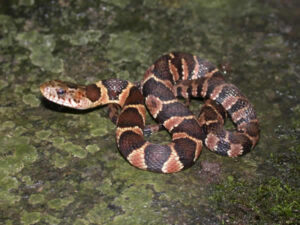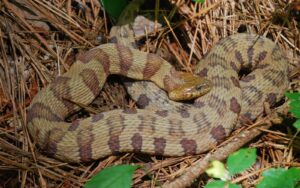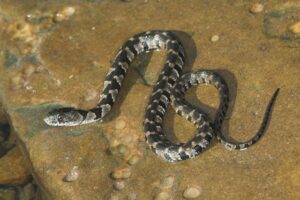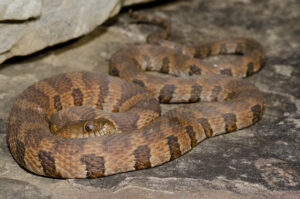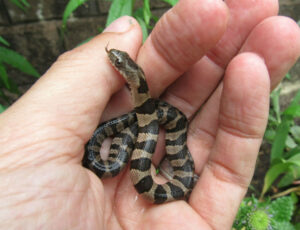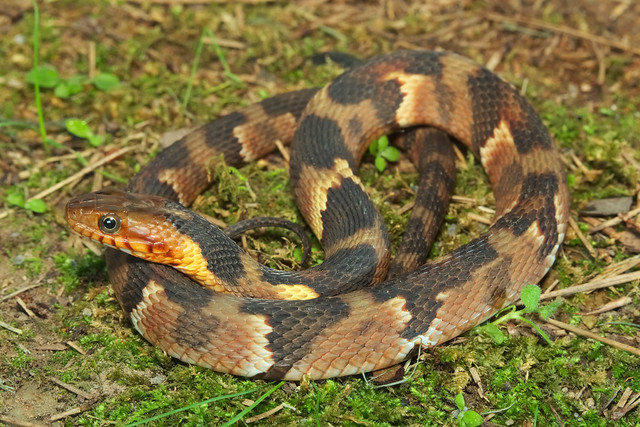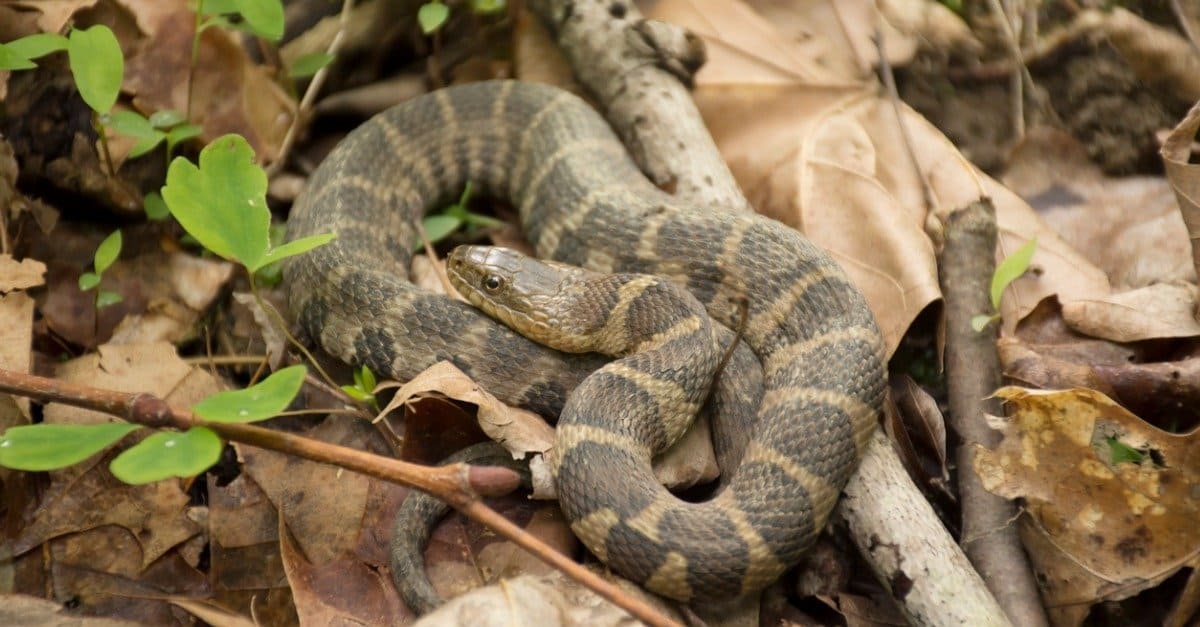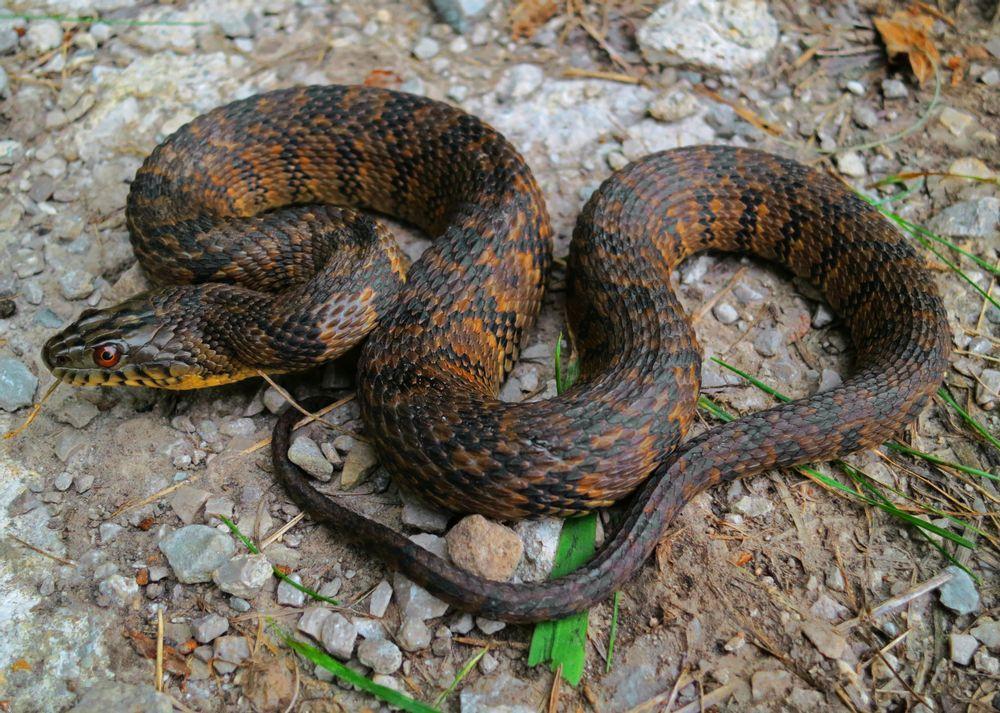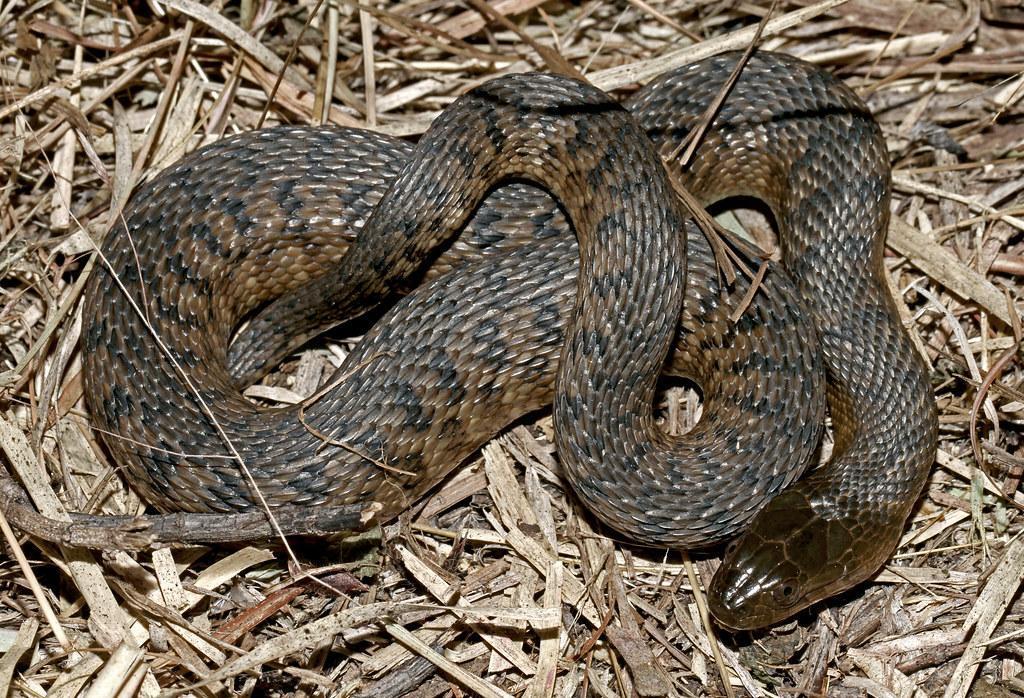The midland water snake or midland watersnake is a subspecies of the northern water snake. The natricine, aquatic, stout-bodied colubrid is endemic to North America.
Scientific Classifications
- Suborder:Serpentes
- Family:Colubridae
- Genus:Nerodia
- Species:N. sipedon
- Subspecies:N. s. pleuralis
Conservation Status
Description
Size
Most adults are 22-40 in (56-102 cm) in total length. The maximum recorded size of the subspecies 51.5 in (131 cm).
Color and Appearance
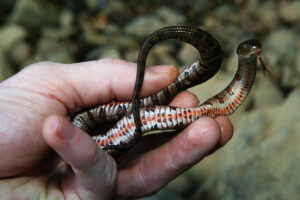
The front portion of the body has a pattern of dark crossbands on a light background color. At the rear portion, the crossbands are replaced by 3 rows of alternating squarish blotches. The light spaces between the blotches are wider than the dark patterns. The ground color ranges from brown to gray to cinnamon, while the band color varies from black to tan to red. There are crescent-shaped markings on the ventrals that tend two create two stripe-like series. The belly may be light or dark-colored.
Are They Dangerous to Humans
When approached, the midland watersnake typically flees by diving into the water. When cornered, it flattens its head and body, releases a foul musk from its anal glands, and readily bites to defend itself but has no venom to cause any danger. It is not aggressive and avoids direct contact with humans.
Midland Water Snakes at a Glance
Distribution
Its range is the central and southern US, specifically, northern Arkansas, Alabama, northwestern Georgia, southern Indiana, southern Illinois, southeastern Louisiana, western Kentucky, Mississippi, southern Missouri, northwestern South Carolina, southeastern Oklahoma, and western and southeastern Tennessee.
Habitat
It occurs in wet habitats like marshes, streams, ponds, and swales.
It is often found basking on the shoreline, floating debris, or emergent vegetation on sunny days
Lifespan
The maximum longevity of the water snake is 10 years.
Predators
Large shore birds and other snakes are its predators.
Diet
The juveniles and young adults eat a variety of prey, like frogs, fish, and salamanders. The adults mainly consume fish.
Reproduction
Ovoviviparous (gives birth to live young from eggs that hatch inside the body)
The babies are more distinctly marked than the adults.
Similar Species
The venomous cottonmouth or water moccasin, Agkistrodon piscivorus, has vertically elliptical, cat-like pupils, while the midland water snake has round pupils. Plus, the former has a facial pit between the nostril and the eye, while the latter doesn’t have it.
Copperhead
The pattern on the midland water snake is narrow on the sides and wide near the backbone. On the other hand, the venomous copperhead, Agkistrodon contortrix, has an hourglass-like pattern.
Source
srelherp.uga.edu, 2.bp.blogspot.com, live.staticflickr.com, thirdeyeherp.com

